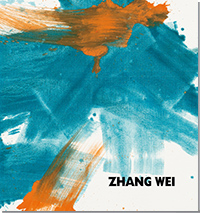Artist's Books / Special Editions
Almond, Darren: All Things Pass
Almond, Darren / Blechen, Carl: Landscapes
Brown, Glenn: And Thus We Existed
Butzer, André: Exhibitions Galerie Max Hetzler 2003–2022
Chinese Painting from No Name to Abstraction: Collection Ralf Laier
Choi, Cody: Mr. Hard Mix Master. Noblesse Hybridige
Demester, Jérémy: Fire Walk With Me
Dienst, Rolf-Gunter: Frühe Bilder und Gouachen
Dupuy-Spencer, Celeste: Fire But the Clouds Never Hung So Low Before
Ecker, Bogomir: You’re NeverAlone
Elmgreen and Dragset: After Dark
Förg, Günther: Forty Drawings 1993
Förg, Günther: Works from the Friedrichs Collection
Galerie Max Hetzler: Remember Everything
Galerie Max Hetzler: 1994–2003
Gréaud, Loris: Ladi Rogeurs Sir Loudrage Glorius Read
Grosse, Katharina: Spectrum without Traces
Hatoum, Mona (Kunstmuseum
St. Gallen)
Eric Hattan Works. Werke Œuvres 1979–2015
Hattan, Eric: Niemand ist mehr da
Herrera, Arturo: Boy and Dwarf
Hilliard, John: Accident and Design
Horn, Rebecca / Hayden Chisholm: Music for Rebecca Horn's installations
Horn, Rebecca: 10 Werke / 20 Postkarten – 10 Works / 20 Postcards
Huang Rui: Actual Space, Virtual Space
Kowski, Uwe: Paintings and Watercolors
Mikhailov, Boris: Temptation of Life
Mosebach, Martin / Rebecca Horn: Das Lamm (The Lamb)
Neto, Ernesto: From Sebastian to Olivia
Oehlen, Albert: Mirror Paintings
Oehlen, Albert: Spiegelbilder. Mirror Paintings 1982–1990
Oehlen, Albert: unverständliche braune Bilder
Oehlen, Pendleton, Pope.L, Sillman
Oehlen, Albert | Schnabel, Julian
Phillips, Richard: Early Works on Paper
Riley, Bridget: Paintings and Related Works 1983–2010
Riley, Bridget: The Stripe Paintings
Riley, Bridget: Paintings 1984–2020
Roth, Dieter & Iannone, Dorothy
True Stories: A Show Related to an Era – The Eighties
Wang, Jiajia: Elegant, Circular, Timeless
Wool, Christopher: Westtexaspsychosculpture
Zhang Wei / Wang Luyan: A Conversation with Jia Wei

|
|
|||
Zhang Wei English Hardcover with dust jacket |
Zhang Wei (born 1952) is internationally regarded as one of the most important Chinese painters. Already in the 1970s he started the quest for an independent artistic identity within the legendary No Name Group. The present book showcases a series of new abstract paintings exhibited at Galerie Max Hetzler in 2016: large canvases, bright colors applied with a great lightness of touch, almost like watercolors. Zhang builds his compositions in an additive process which allows no painting over, but only the present as an expression of a specific situation: “It is about the choice of colors,” the artist explains. “To me color is just myself.” Along with these current abstractions we find a group of very early paintings on paper made from 1974 to 1977. Moving outside the art education offered by the state, Zhang painted parks and buildings in plain air. Two essays follow the artist’s further development: working as a set designer at the traditional Kunqu opera, and finding his own way in abstraction through influences from ink wash painting and calligraphy. In the mid-1980s Zhang moved to New York for 20 years and on his return combined both worlds, countering the process-oriented approach of abstract expressionism with the Chinese stance expressed in the saying: “Power is formless.” Between both, the new paintings of Zhang Wei show the work of a man who in life as in art places freedom above everything.
A Colourful Dissonance Freedom is more than just an attitude for Zhang Wei, it is central to his practice. People don’t question the abstract qualities of music, they just want to feel something. But from art they demand an explanation, they want it to mean something literal. As art in China had been hijacked by ideological meaning ever since 1949, Chinese art officially was about reading. Accordingly, Zhang Wei’s whole art journey has been a journey to free himself from those shackles. For him, abstract art has always represented freedom. It doesn’t have to ‘mean’ anything in a literal sense; in fact, meaning itself is freed or changed in the process. One creates personal meaning through one’s practice. The process of changing meaning is from the general and external to the internal and personal. Therefore, what is expressed is finding oneself – something very important after the brainwashing social and political experiments of the Cultural Revolution. Zhang Wei’s work essentially remains a balancing act between sometimes dissonant elements: the East and the West, movement and stillness, control and craziness, color and form, paint and blank canvas, approximating the balance he has attempted to achieve in his life. Much as abstraction offers us a freedom from the power of external narratives, at the end of the day Zhang Wei’s work manages to give us both: a personal story to be read and the energy and fragility of his forms to be felt.
... In collaboration with Galerie Max Hetzler Berlin | Paris
|